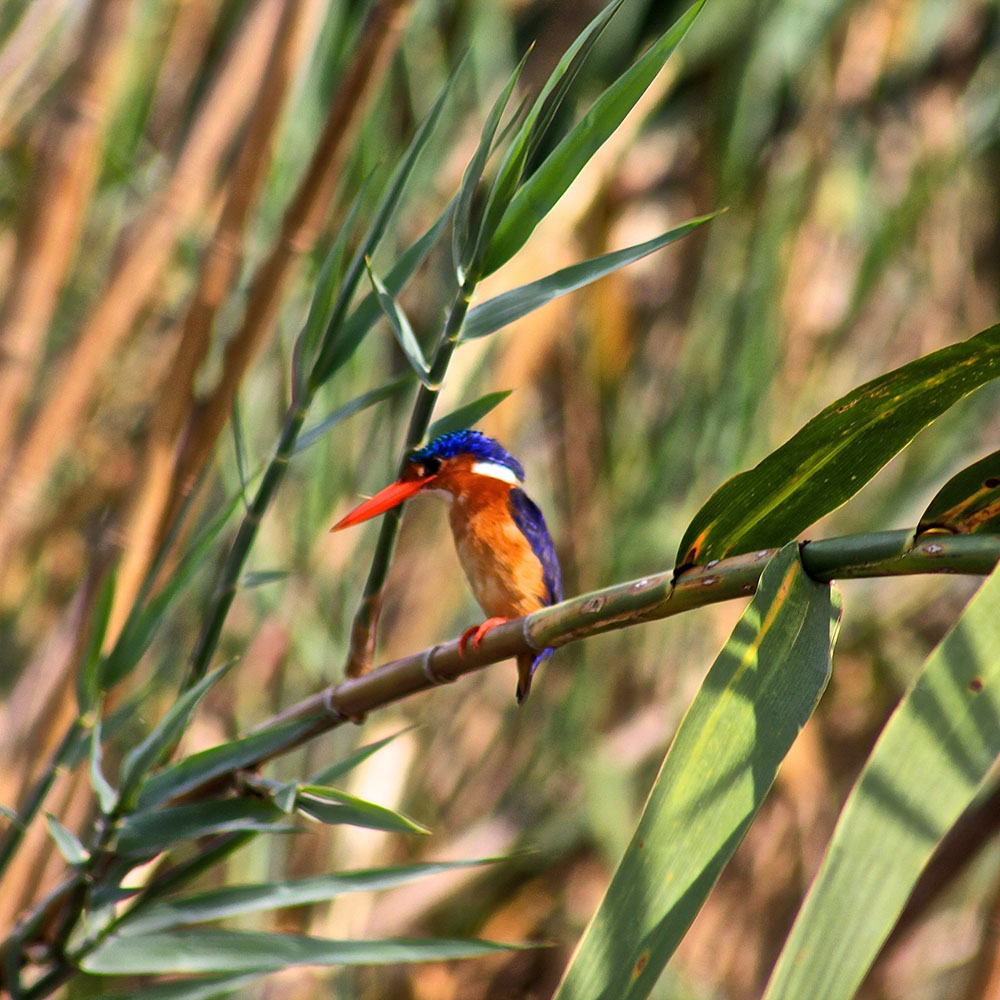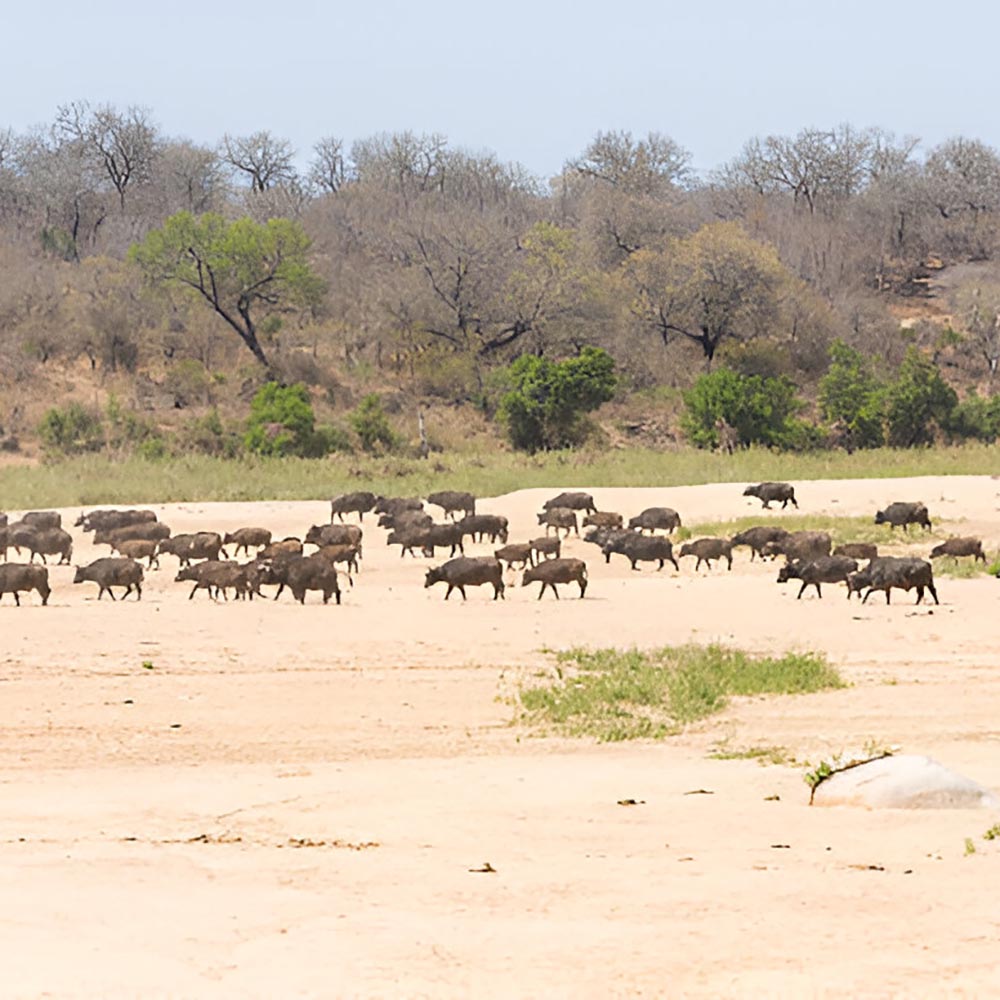Why visit the Nyerere Park?
Spanning over 30,000 square kilometers, Nyerere National Park is Africa’s largest national park, yet it remains surprisingly untouched by crowds. The Rufiji River weaves through the plains and woodlands, creating a stunning maze of streams, channels, and tranquil lakes.
Skeletal leadwood trees dot the glassy lagoons, where terrapins glide just below the surface. Pods of hippos lounge nearby, while vibrant birds and butterflies dance among the yellow cassia flowers. This vast wilderness offers incredible photography opportunities.
Wildlife in Nyerere National Park
Home to Africa’s largest populations of buffalo and lions, Nyerere is teeming with wildlife. Leopards roam, wild dogs thrive, and herds of wildebeest, zebra, impala, hartebeest, greater kudu, and eland are common sights. In the afternoon heat, herds of over 50 giraffes quench their thirst at the lakes, while elephants cross channels to graze on lush islands.
Boat Trips in Nyerere National Park
Boat trips are a highlight here, allowing you to float serenely on the water. Spot yellow-billed storks nesting in borassus palms, baboons by the water's edge, and white-crowned plovers grooming crocodiles. The riverine forest invites gentle strolls, where you might catch glimpses of blue samango monkeys and black-and-white colobus.
Driving through the park in open 4x4s, you'll encounter abundant wildlife without the distraction of other vehicles, making for a peaceful experience.
Fly-Camping in Nyerere National Park
Some camps offer unique 'fly-camping' experiences, accommodating up to eight guests in remote, roadless areas. Days are filled with walking and boating, and nights are spent in simple dome tents with hot bucket showers and lavish bush dinners by the water's edge. While most trips last one to three days, Sand Rivers organizes extended adventures for those seeking a deeper connection with this pristine wilderness.
Photos of Nyerere Park






Suggested Accommodation Nyerere Park
At Nyerere Park, we’ll find the ideal accommodation for you—whether you prefer a luxurious lakeside lodge or a cozy guesthouse nearby.

Beho Beho

Kiba Point

Selous Impala Camp

Selous Kulinda Camp

Lake Manze Camp

Sand Rivers
Why travel with
Genau Adventure Safaris
Frequently Asked Questions
We've answered all your questions about visiting Nyerere Park to help you plan the perfect trip.
Nyerere National Park is renowned for its vast wilderness, diverse wildlife, and stunning landscapes, including rivers, lakes, and savannahs.
The park can be accessed by road from Dar es Salaam or by chartered flights to nearby airstrips.
Visitors can see a variety of wildlife, including lions, elephants, buffalo, wildebeest, zebras, leopards, and numerous bird species
Activities include game drives, walking safaris, boat safaris on the Rufiji River, and fly-camping experiences.
Yes, there are several lodges and camps offering various levels of comfort, from luxury lodges to more basic camping options.
The best time to visit is during the dry season (June to October) when wildlife is more active and easier to spot.
Yes, malaria is present in the region, so it’s advisable to take preventive measures, such as antimalarial medication and using insect repellent.
Yes, many lodges welcome families, but it’s best to check specific age restrictions and suitability of activities for younger children.
Essentials include lightweight clothing, sturdy walking shoes, sunscreen, insect repellent, binoculars for wildlife viewing, and a good camera.









